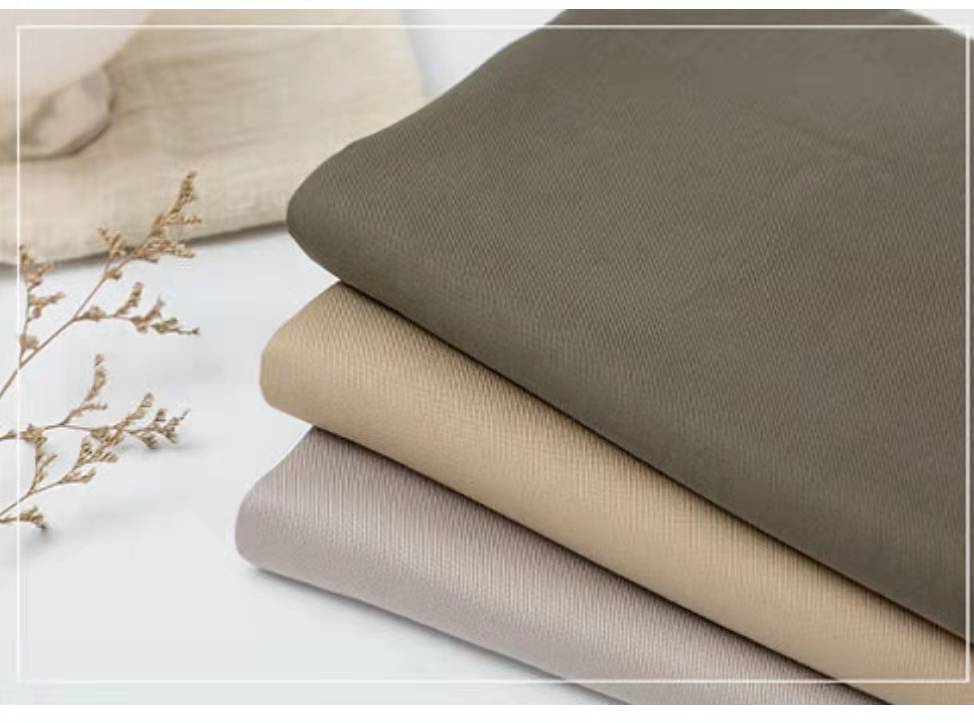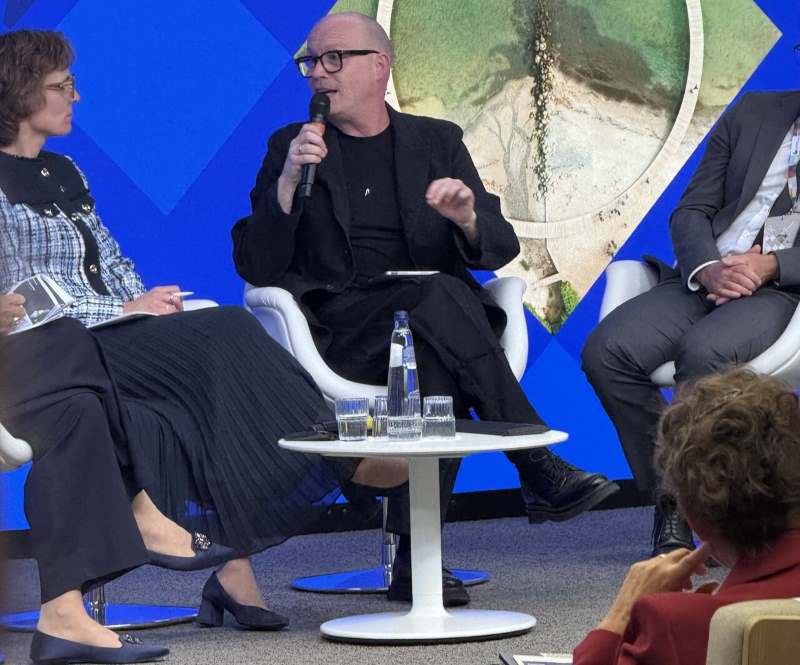Slowdown in the Indian textile and apparel sector has kept worker wages flat over the past year with the impact varying across unit sizes.
In garment factories in Tiruppur, workers’ salaries declining by almost one third of last year. Export units in the city have reported 40 per cent job loss in the last six months with export orders declining to 60 per cent, says PR Natarajan, General Secretary, All India Trade Union Congress.
Garment factories in Bengaluru are facing labor shortage with workers’ switching to jobs at either shopping malls or metro rail stations. With 90 per cent of the workers in these factories being women, jobs with better pay and no harassment are being preferred, adds VPRukmini, President, Garment Workers’ Union.
Having lost their jobs, workers in Karnataka are moving to other states like Gujarat and Telangana, states PradeepNatarajan, Mill Owner, Coimbatore.
The textile sector in these states currently faces lack of orders, slump in rates for fabric weavers and spinners, and import of value added products. As per a study by the Textile Committee, the sector lost 2.14 lakh jobsfrom 2015-2020as exports declined while imports surged.
The industry also suffers frominsufficient data on the impact of the slowdown in the post COVID year; vast differences in labor profiles and systems between organised and unorganised sectors; migration of workers to better paying jobs and lower labor costs is other textile exporting nations.
R. Karumalaiyan, National Secretary, Centre of Indian Trade Unions, avers, the sector suffers from lack of Unionisationand insufficient data for the industrial surveys. It needs to address the needs of both its resident and migrant workers, adds Karumalaiyan.
To protect local textile producers, the Nigerian Customs Service plans to ban the sale of secondhand clothes, popularly called Okrika or Gwanjo in local parlance in Nigeria.
According to a report by Al Jazeera, almost 80 per cent of the Nigerian apparel market is filled with secondhand clothes illegally shipped into the country from neighboring states.
As per the database with UN Comtrade, Ivory Coasts imports around 13,066 tonne of secondhand clothes while Ghana imports 79,963 tonne.
Poor people in the region prefer to buy secondhand clothes as they are relatively cheaper and of better quality. The clothing items most in demand include men’s shirts, ladies cotton dresses, men’s cotton pants, men’s underwear, ladies chiffon dresses, and ladies’ t-shirts.
As per estimates, over 200 people in the country are directly or indirectly involved in the business of second-hand clothing. The trade helps stimulate the local markets and generate employment opportunities, says Malam Ibrahim, Senior Lecturer, Department of Marketing, Kaduna Polytechnic.
The trade also helps Nigerian individuals improve their standard of living by providing affordable clothing options, he adds.
However, the invasion of secondhand clothes in the Nigeria apparel market is stifling the domestic industry leading to job losses and reduced opportunities for local manufacturers. Besides, the transportation and processing of secondhand clothing items also contributes to pollution by generating greenhouse gas emissions. The government can help prevent this by restricting the import volume or introducing minimum quality standards for them, adds Ibrahim.
Founded in 2005, Mohan Spintex India Ltd (MSIL) is likely to amongst the topmost textile companies by the end of this decade.
Currently having 4,500 employees, MSIL has a yearly turnover of $0.134 billion. The company manufactures products like s cotton, blends of cotton with polyester, viscose, modal, linen and lyocell fabric. The weaves include percale, satin, twill, damask stripe, pin stripe, dobby and jacquard.
In the home textile segment Mohan Spintex offers a variety of products from flat sheets over mattress protectors to comforter shells. The company offers end-to-end solution for BCI cotton, organic cotton, Egyptian cotton and Supima cotton products. The Mohan group produces for leading Indian fabric & garment manufacturers such as Welspun, Himatsingka, Indo count, Mafatlal, etc. while it also exports to leading fabric and garment manufacturers all over the world, mainly the US, EU and China.
In 2020, MSIL installed two Brückner machines. The Brückner Power-Colortherm continuous dyeing range is an oil-heated machine with 3,200 mm working width, one dyeing padder, one Eco-Steam Unit, an infrared dryer and respectively a cooling zone in the entry and the exit. The second machine is an oil-heated Power-Frame stenter with 8 chambers, horizontal transport chain and highest drying capacity.
The extremely homogeneous air volume and temperature distribution due to countered thermo zones and the proven split-flow air circulation system are the highlights of this machine. Their maintenance-friendly components help save production costs.
The duty facility under the Everything but Arms (EBA) scheme has, for the first time, made Bangladesh the top knitwear exporter in the European Union.
As per data from the Eurostat, from January-September 2023, EU's knitwear imports from Bangladesh reached $9 billion, exceeding he share of any other country, both in US dollar terms and in volume.
During the nine months, the bloc imported knitwear products worth $9 billion from Bangladesh against $8.96 billion from China.
EU's knitwear import from Bangladesh, during the period, weighed 571 million kg against 442 million kg from China, notes Faruque Hassan, President, Bangladesh Garment Manufacturers and Exporters Association (BGMEA).
One of the reasons for Bangladesh’s robust rise in knitwear exports to the EU is the country’s recent investments in high value-added items, especially activewear, adds Hassan.
Last year, the EU imported clothing items weighing 1.33 billion kg from Bangladesh against 1.31 billion kg from China. In terms of value, however, its clothing imports were $7.3 billion less than China's.
Bangladesh also tops in the EU and the US in a few other areas in the garment sector.
For example, the country has been the leader in the EU in denim sourcing since 2014, with Turkey in second and Pakistan in third.
In 2020, the country overtook Mexico to become the largest denim exporter to the US. Pakistan came third in the largest market in the world.
Multiple supply chain disruptions during the pandemic provided a great fillip to the textile and apparel (T&A) trade in the US as production reached a record high of $28 billion in 2022, as per statistics from the US Bureau of Economic Analysis.
T&A exports from the country jumped by 12 per cent to over $24.8 billion in 2022, show figures from the study by the Office of Textiles and Apparel (OTEXA) under the US Department of Commerce. The study details the production and export practices of 432 US textiles and apparel manufacturers.
A study by Shenglu Fashion shows, textile manufacturers in the US are concentrated in a few regions whereas apparel manufacturers are spread across the country. Both textile and apparel manufacturers have a large concentration of small and medium-sized enterprises (SMEs). They also have limited vertical manufacturing capability.
Most of the T&A manufacturers in the US use imported components, as per the OTEXA study. The likelihood of imported components being used is more amongst smaller T&A manufacturers, indicating a need to support these manufacturers to access textile input through mechanisms such as the Miscellaneous Tariff Bill (MTB).
The study further says, most of the exports markets for US-made T&A products are concentrated with 72 per cent of apparel mills and 57 per cent of home textiles manufacturers selling their products in less than two markets. These manufacturers sell a higher percentage of their goods in the domestic market. The markets for US technical textile manufacturers were most diverse with nearly 40 per cent exporting to more than ten countries.
Besides the Western Hemisphere, around 50 per cent of US textile and apparel manufacturers also export to Asia, Europe, and the rest of the world, as per the database with OTEXA. .
Additionally, over 50 per cent of US T&A exporters leveraged US free trade agreements (FTAs). The use of FTAs was more common amongst textile mills in the US rather than apparel manufacturers. These exporters also used the USMCA agreement in large proportion to boost trade between the two countries.
With the popularity of Chinese products evolving over the past few decades, they are now poised to enter the international market.
Wu Rongzhao, Chairman, Erke, a Chinese sportswear brand, says, technological innovation helps his brand boost productivity. His company has collaborated with national research centers to focus on technological innovation for future development.
Snow Lotus, a time-honored Chinese cashmere brand, also focuses on technological innovation as it looks to consistently strengthen the core competitiveness of its products,quips GanXuerong, Chairman.
GaoDekang, President, Bosideng, a major Chinese manufacturer of down jackets, also considers innovation as a crucial factor in shaping a more promising future for the industry.
In recent years, many Chinese brands have garnered global recognition by implementing the "going global" initiative and expanding into international markets to generate substantial profits and tap diverse resources.
Armos, a major candy producer, has expanded to over 50 countries and regions, notes Ma Enduo, Founder and Chairman. The feat was highlighted in a case study collection by Harvard Business Review last year.
A few nascent Chinese brands like Voyah have also adopted a global business strategy right from the beginning, For instance, Chinese luxury electric auto brand plans to tap the Europe market for its initial global expansion. Currently, the brand is present in Norway, Denmark, Finland and Bulgaria and has launched projects in other countries like Germany, Italy and France
A few companies are also exporting their corporate culture and rich heritage to reshape global perceptions of Chinese technological innovation and boost brand visibility internationally
Lu Zhan, Secretary-General, Beijing Reignwood Culture Foundation, says, developing its unique cultural brands amid China's economic growth, the foundation has organized high-quality cultural activities through collaborations with global art influencers, acting as cultural ambassadors.
The Tamil Nadu government plans to establish 10 mini handloom parks across the state including in Coimbatore, Gudiyatham, Jayakondam and Kancheepuram. Each of these parks will house 100-150 handloom weavers, besides a market expert. Together they will form a special purpose vehicle (SPV) to manufacture products based on requirements as assessed by the market expert.
The third largest handloom market in India after Assam and West Bengal, Tamil Nadu employs around 2.2 lakh people with 50 per cent of them being women and about 50 per cent of them being covered by the cooperative support system.
However, increasing mechanisation and powerlooms are impacting the handloom industry in Tamil Nadu with these products no longer being partronised by the common man.
Currently, handlooms in Tamil Nadu focus only on saris. The profession needs to be made remunerative by adding more niche products and tapping on the export potential, says K Vivekanandan, Commissioner-Textiles, Government of Tamil Nadu.
Traditionally, handlooms are housed in individual homes and collectively come under a cooperative society. The mini-handloom parks will bring them under one common roof to jointly produce for the market, adds Vivekanandan.
The government along with Co-optex has been diversifying products to include shirts, kurtis, home and kitchen furnishings as well as accessories. The handlooms department has conducted awareness programs in 150 colleges to create a market for handloom products among students.
Another problem with handlooms is that mostly a particular community is involved in the trade. Since the focus of these handlooms has been on one product, their income has being limited. To secularise the sector, the state government has started several weaver induction training programs.
The sector also needs to expand its product range to attract young buyers, opines Jawahar Singh, Cofounder and CEO, Avishya Trading. Removing middlemen would ensure higher returns for weavers, he adds.
The fashion industry’s presence at the COP28 conference in Dubai has been getting progressively strongly. However, its transition to renewables has been slow and scattershot, says HakanKaraosman, Assistant Professor, Cardiff University.
The tools and technology promoted by most fashion giants cannot bring any change if the industry does not focus on the real problem: production volumes, adds Karaosman, who also chairs the Union of Concerned Researchers in Fashion.
Just before the close of COP28, negotiators from 196 countries struck an unprecedented deal to phase out fossil fuels.
Environmental advocacy group, Stand.earth, together with Oxfam Bangladesh, launched a call to the 100 UN Fashion Charter for Climate Action signatories, which include names such as Adidas, H&M Group, LVMH Moët Hennessy Louis Vuitton and The North Face owner VF Corp. These brands committed to phase out fossil fuels in their supply chains by 2050.
Currently, only the Kering group, among the luxury brands, has declared its commitment to use 100 percent renewable energy in the supply chain by 2030.On the other hand, LVMH announced the redoubling of its biodiversity and climate initiatives. The brand signed an agreement with the Foundation For Amazon Sustainability to combat deforestation and improve the environmental footprint of its stores in partnership with real estate developers in the United Arab Emirates and Miami.
The 75th Cairo International Textile Machinery Exhibition, co-located with Cairo Fashiontex, promises groundbreaking advancements in Egypt's textile sector from October 3rd to 5th, 2024.
With over 80% of Egyptian textile companies upgrading machinery, global industry leaders have a strategic opportunity to engage in this transformative phase.
Egypt's central geographical location offers a key hub for international collaboration, fostering essential connections within its dynamic textile market.
The exhibition, hosting 450 pre-arranged B2B meetings, amplifies business networking opportunities. Egypt's textile industry, with 3,243 companies and a 3.2 billion USD investment, stands as a major global player annually producing 315 million apparel and exporting 305,000 tons of cloth and apparel.
Diesel's innovative concept, Diesel Loves, spearheaded by creative director Glenn Martens, challenges industry norms by encouraging the denim community to collaboratively share materials and resources, disrupting traditional brand partnerships.
The inaugural collaboration with Lee, titled "Diesel Loves Lee," transforms unsold stock into unique designs, fostering sustainability.
With a limited edition of 3,000 pairs available exclusively on diesel.com, the collection, priced at $350, echoes the power of denim to unite, featuring co-branded labels and diverse styles.
All proceeds support the UNHCR, embodying Diesel's commitment to positive change in fashion.
More...
- 1
- 2
- 3
- 4
- 5
- 6
- 7
- 8
- 9
- 10
From satin to smart textiles, the rise of FDY in a changing market
In the complex world of polyester filament yarns, where POY (Partially Oriented Yarn) is the foundation and DTY (Drawn Textured... Read more
Polyester’s reign vs. Lyocell’s strain, can green fibers survive?
The recent job cuts announced by Lenzing, a pioneer in sustainable cellulosic fibers, are a stark reflection of the complex... Read more
Indian Textile and Apparel Exports Hit Hard in September: As US tariffs take hol…
The Indian textile and apparel industry has shown the first clear signs of being impacted by the new US tariffs,... Read more
Fast, cheap, unstoppable, Shein shockwave hits Germany’s fashion retial
In a country known for its deep-rooted retail traditions, discerning shoppers, and a growing emphasis on sustainability, the rise of... Read more
Europe’s Circular Turn: The Danish vision shaping a new industrial era
In a speech that captured both urgency and ambition, Danish MEP Rasmus Nordqvist stood before an audience of European policymakers,... Read more
“The US government’s economic data makes no sense. It’s a con.” says David Birnb…
“The US government’s economic data makes no sense. It’s a con,” declares David Birnbaum, strategic planner for the global garment... Read more
India's fiber sector spins a new thread of growth
India's clothing fiber sector is on the cusp of a revolutionary decade, moving beyond its traditional identity as a cotton... Read more
Global Supply Chain Earthquake: The 100% ‘Trump Tariff’ and the scramble for Chi…
The imposition of an additional 100% tariff on all Chinese goods by President Donald Trump—a move that underscores the fickleness... Read more
Trump's 100% Tariff on China: Why should Indian apparel exporters not view this …
The announcement by President Donald Trump to impose an additional 100% tariff on all Chinese goods, on top of existing... Read more
Yarn Expo Autumn 2025: A premier international platform for the yarn industry
Yarn Expo Autumn 2025 concluded a highly successful run, firmly establishing its position as the premier international platform for the... Read more












